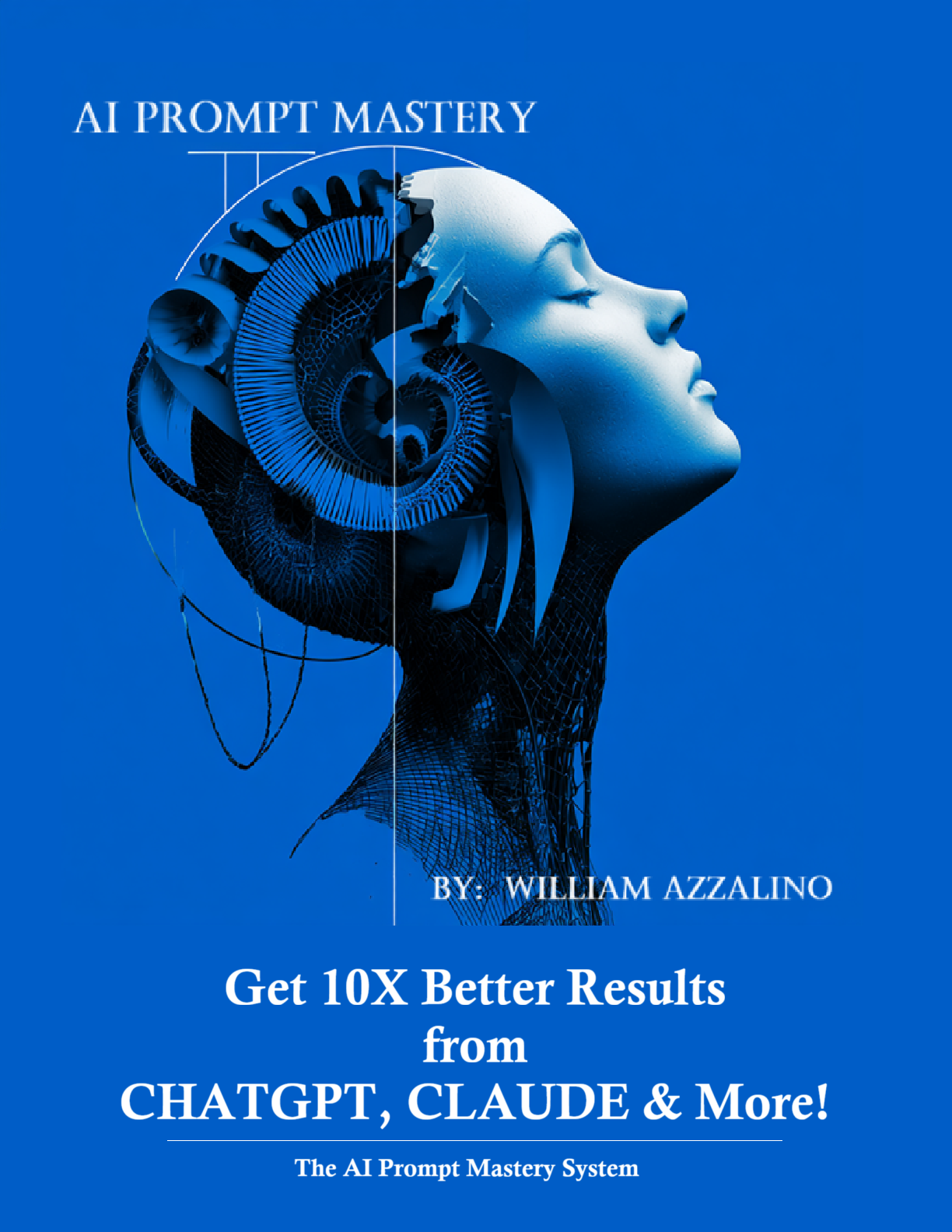
Ai Prompt Mastery System
Reliable shipping
Flexible returns
Get 10X better results from Chatgpt, Claude & More!
Thoughts from the Author:
Foreword
By William Azzalino, AIA
In 1975, when I first sat down at a computer terminal to develop hidden-line algorithms for three-dimensional graphics, the notion that machines might one day understand human language seemed like pure science fiction. Yet here we are, five decades later, in an era where conversing with artificial intelligence has become as commonplace as drafting blueprints once was revolutionary.
My journey through nearly half a century in computing has taught me that every technological revolution follows a similar pattern: the tools arrive before we fully understand how to wield them. In the 1970s, as I helped pioneer the computer graphics systems that would eventually transform architectural visualization and CADD drawings, many architects dismissed digital tools as unnecessary complications. They couldn't have been more wrong. Those who mastered the new medium didn't just adopt a tool—they gained a competitive advantage that reshaped the entire profession.
Today's AI revolution echoes that same inflection point, but with even greater implications.
As a nationally recognized, award-winning architect who has designed everything from intimate residences to large-scale hospitality projects—including co-founding what became the largest hospitality design firm in the world—I've witnessed firsthand how communication shapes outcomes. Whether I was presenting concepts to developers like Cadillac-Fairview, collaborating with engineering teams on sustainable design solutions, or explaining complex spatial relationships to clients, the precision of my language directly determined the quality of the results.
This principle holds equally true when communicating with AI systems. The difference between a mediocre result and a transformative one often lies not in the capability of the AI, but in the clarity and craft of the prompt.
What fascinates me about this new frontier is how it democratizes creativity and problem-solving. When I developed those early 3D imaging systems, the barrier to entry was enormous—specialized hardware, programming knowledge, and years of technical training. Today's AI tools require none of that. The only barrier is understanding how to ask the right questions in the right way. That's a remarkably low threshold, yet it's still a threshold that separates those who dabble from those who excel.
Throughout my career, I've approached every new technology—from CAD systems to building information modeling to sustainable design simulations—with the same philosophy: master the fundamentals, understand the underlying principles, and then push the boundaries of what's possible. This book embodies that philosophy for the age of artificial intelligence.
The authors have done something essential: they've transformed the seemingly intuitive act of writing prompts into a learnable, improvable skill. Just as I once learned that certain geometric algorithms produced cleaner visualizations, or that specific material specifications yielded more sustainable buildings, readers of this book will discover that certain prompt structures, phrasings, and approaches consistently generate superior results.
Whether you're an architect visualizing your next project, an entrepreneur solving business challenges, a creative professional exploring new ideas, or simply someone who wants to leverage AI more effectively in daily life, the principles in this book will serve you well. They represent not just tactics, but a way of thinking about human-machine collaboration that will remain relevant even as the technology evolves.
The future belongs to those who can bridge the gap between human imagination and machine capability. Prompt mastery is the bridge.
I'm grateful to have witnessed—and contributed to—the dawn of computer graphics that revolutionized how we visualize and create. Now, as AI reshapes how we think, communicate, and solve problems, I'm equally excited to see what this next generation of tool-masters will build.
The canvas is infinite. The tools are ready. All that remains is learning the language.
William Azzalino, AIA
National Award-Winning Architect
Computer Graphics Pioneer
Newport Beach, California



